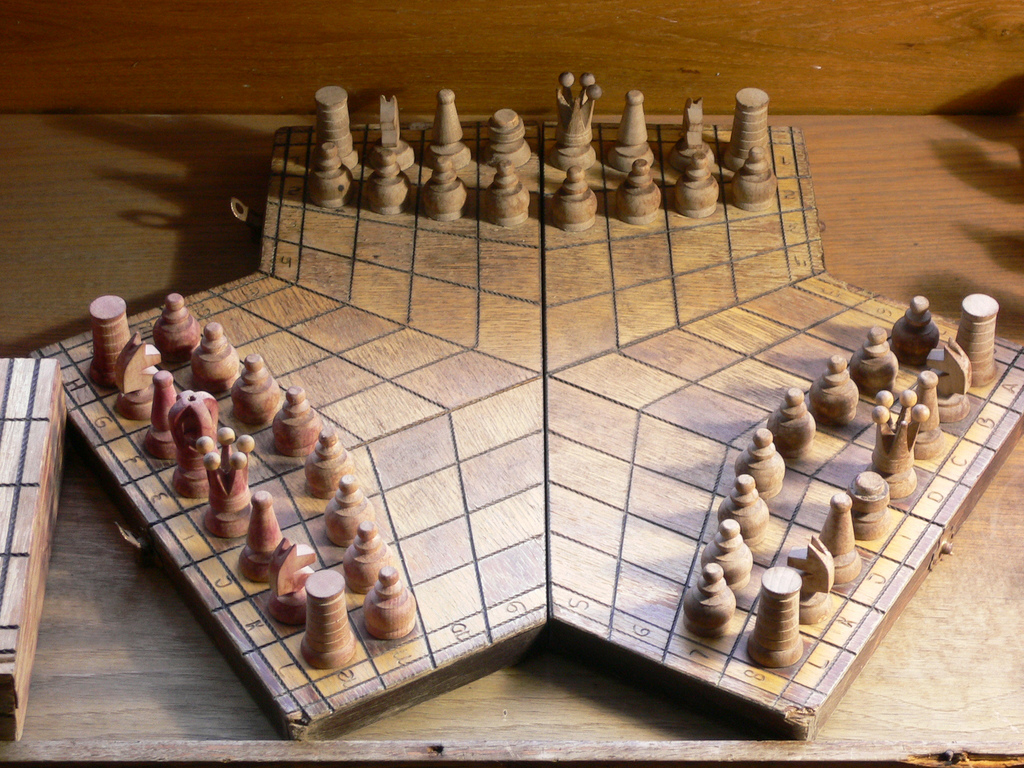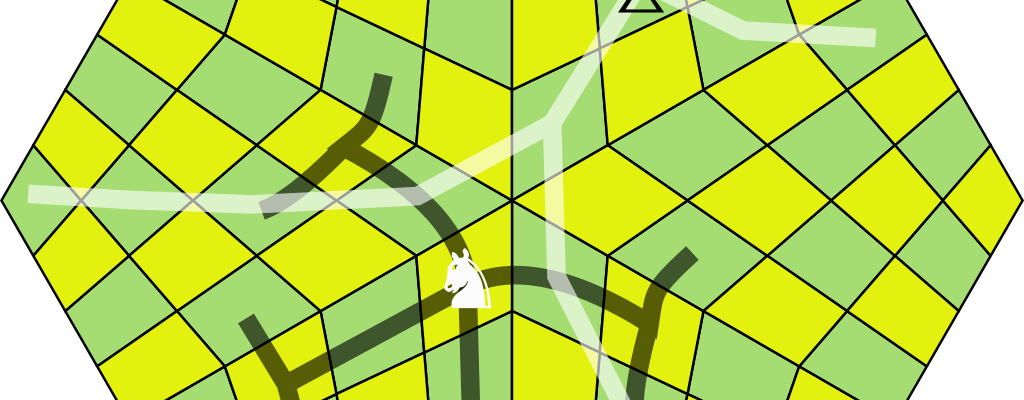TranformerLens is a Python library for Mechanistic Interpretability. It’s got some great tutorials… but they are all kinda verbose. Here’s a cheatsheet of all the common things you’ll want from the library. Click the links for more details.
Continue readingUncategorized
Outer Wilds Mission Graph
I recently played Outer Wilds and absolutely loved it. But after playing it I realised how little of the game was really on the critical path – most locations fill in lore and deepen your curiosity but don’t actually help you reach any location you couldn’t before. To analyse this, I made a mission graph for the game. Spoilers ahead.
SPOILERS IN FULL ARTICLEBecoming Cracked
Recently, I’ve quit my job, and have been trying to learn a new field, with plans towards a bit of a lateral career shift after 16 years as a Financial Software Engineer.
This has caused a fair bit of soul searching, because as it turns out, learning new things is hard.
The first things to conquer were the fear of looking stupid, and persevering without that feeling of mastery. It’s frustrating, but not unexpected, when it comes to learning something new.
Today, I wanted to talk about another roadblock that I’m coming to grips with. I remember when I was much younger, I would absorb new material with ease. Now that I’m doing it as a mini-mid-life crisis, it feels like I’m forcing it, and it takes much more effort. There was a time when I thought I’d lost my “spark”, or at least had replaced fluid intelligence with crystalized intelligence. I eventually realized though that’s not true. I’m basically as sharp as ever, but instead I have a differe a mental roadblock to deal with:
The thing is, I’m more complete a person right now. As a youngster, I was far more willing to obsess over something or make it a core part of my identity. Then work on it far more than is healthy or sensible. Now, I feel I have ties to a dozen different areas – my career, my hobbies, my relationships. Each of these demands time and focus.
I see the same pattern when it comes to learning languages. Children learn languages very well, even outside of the critical period. There have been studies showing this is is because they simply sink ungodly amounts of time into learning. I’ve been revising German as an adult via Duo Lingo for 3 years. But 5 minutes a day for that period adds up to a term or two of school lessons, excluding any homework. It’s no surprise that I’ve made no progress with that sort of dedication.
I’ll probably never be cracked at something new, same as how I’ll never reach native level fluency at German.
So am I essentially arguing for a form of agism, then applying it against myself? That I’m saying that even if you have the same energy, intellect and time as a youth, you are unlikely to be as devoted to something new? That I’ve become cynical, instead of passionate?
I think not. Instead, my mental model is that of a super-tanker. Now that I am a bit older (though not that old!), my hull is stocked with precious resources. I’m used to spending on time on things, and that gives a certain momentum to winding down one thing and doing another. Turning is not something to be taken lightly when you’ve spent so much fuel getting up to speed in one direction. But perhaps it is more valuable to arrive with goods at the right destination, but late, than it is to arrive elsewhere, or arrive empty handed.
An Uncanny Moat

Back in the early days of computer animation, the technology at the time really struggled with realism. The first cartoons were necessarily abstract, or cartoony.
As time progressed, the technology caught up. CGI now can be all but indistinguishable from real life. But there was a brief period, as seen in films like The Polar Express or Final Fantasy: The Spirits Within, when the artists aimed for realism and didn’t quite get there.
These films were often critically panned. Eventually, it became clear that the cause was quite deep in the human psyche. These films were realistic enough that we’d mentally classify the characters as real humans, but not so realistic that they actually looked normal. On an instinctive level, people reject these imposters far harder than more stylised graphics that don’t have the pretence of reality.
This phenomenon is known as the Uncanny Valley and has influenced visual design of fake people in films, robots, games etc.
For a time, the recent crop of image generators and LLMs fell into the same boat. Twisting people with the wrong number of fingers or teeth was a common source of derision. People are still puzzling over chatbots that can speak very coherently and yet make wild mistakes with none of the inner light you might expect from a real conversationalist.
Now, or at least very soon, AI threatens to cross that valley and advance up the gentle hills on the opposite side. Not only are we faced with a disinformation storm like nothing before, but AI is going to start challenging exactly how we consider personhood itself.
This is something we need to fight, in addition to all the other worries about AI. I don’t want to get into philosophical weeds about whether LLMs could be considered moral patients. But I think our society and thinking are structured around a clear human/non-human divide. Chatbots threaten to unravel that.
Continue readingPuzzleScript Rules
I was watching ThinkyCon, a conference on making puzzle games, and many designers mentioned that they use PuzzleScript to prototype their ideas. PuzzleScript is a puzzle design environment created by increpare, the designer behind Stephen’s Sausage Roll and many other puzzle games.
PuzzleScript is a marvel of economic design. A single text file specifies, all the graphics, levels, sound effects, and all the rules of the puzzle. It uses a custom system to concisely express rules. So concise that the rules of Sokoban can be expressed in a single line.
This efficiency comes because rules are expressed as find-replace rules. That makes it a grammar replacement system, which I last discussed when looking at Ludoscope and Unexplored. But it has many pragmatic features geared toward puzzle design, which I’ll explore in this article.
Continue readingProjects Using My Software
Some of my tools and software have been arond for some time. Plenty of people use them them, judging from queries and stats I see, but few write back to tell me where it’s actually been used. Here I document some of the published projects. I’m always pleased to see more.
Continue readingDefining Chess Piece Moves using Regular Expressions
Suppose you wanted to code a simple chess game. One key bit of game logic is to describe what are legal moves for each piece. There’s only 6 types of piece (pawn, knight, bishop, rook, queen, king) so this isn’t exactly a hard task. You can write rules such as:
def canRookMove(from, to):
# Ignores questions about colliding with other pieces
return (from.x == to.x or from.y == to.y) and from is not toBut these days, I’ve been thinking a lot about grids, and the above approach just doesn’t generalize. What if you wanted to play chess on a stranger grid?

What would it mean to play chess on the grid above, or a hexagonal grid, and so on? You’d have to write a whole new set of rules, and they could get very complicated depending on the grid in question. What I want is a language that describes how pieces move, which generalizes to any board. And I think I’ve found it, using regular expressions.
Continue readingTessera: A Practical System for Extended WaveFunctionCollapse
I’ve been working a lot on Tessera. I presented a paper at the most recent PCG Workshop of FDG, where I explain how Tessera makes WaveFunctionCollapse somewhat less daunting, and go into some of the details of its features.
That may not be news for users of the software, but here I explain how things work, and what parts work well / I’m especially proud of.
Using Unity’s TextGenerator.verts
TextGenerator.verts is meant to give the position information of every character in a given string. This is useful in Unity if you need to align something with exactly where some particular text is occuring, if for some reason you are not already using TextMeshPro.
Older Unity versions created 4 verts for every character, which made life easy. But now many non-rendering characters don’t have verts generated for them, and the relationship between verts and characters is undocumented. I’ve reverse engineered it, as best as I can tell:
int? GetVertForPosition(int position, string text, TextGenerator textGenerator)
{
var c = 0;
var vert = 0;
for (var i = 0; i < position; i++)
{
if (textGenerator.characters.Count <= c)
return null;
if (!char.IsWhiteSpace(text[i]) && textGenerator.characters[c].charWidth > 0)
vert += 4;
if (text[i] != '\n')
c++;
}
return vert;
}New Discord Server
Let’s face it, running your own WordPress blog is a sign you are woefully out of date. I can see plenty of readers, but never hear from them.
So I’ve created a Discord server. Feel free to log on and ask me support questions about my projects, suggest new article ideas, or just to hang out.
Don’t worry, the blog isn’t going anwhere. I think the jump might kill me if I leaped fully into the 21st century.




